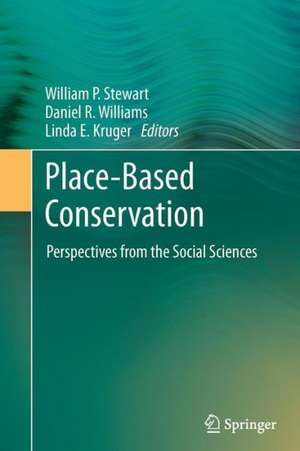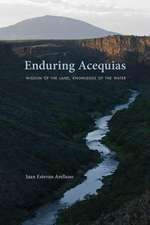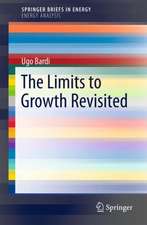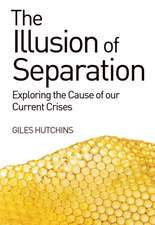Place-Based Conservation: Perspectives from the Social Sciences
Editat de William P. Stewart, Daniel R. Williams, Linda E. Krugeren Limba Engleză Paperback – 8 feb 2015
Place-Based Conservation provides a comprehensive resource for researchers and practitioners to help build the conceptual grounding necessary to understand and to effectively practice place-based conservation.
| Toate formatele și edițiile | Preț | Express |
|---|---|---|
| Paperback (1) | 943.73 lei 43-57 zile | |
| SPRINGER NETHERLANDS – 8 feb 2015 | 943.73 lei 43-57 zile | |
| Hardback (1) | 953.65 lei 43-57 zile | |
| SPRINGER NETHERLANDS – 11 ian 2013 | 953.65 lei 43-57 zile |
Preț: 943.73 lei
Preț vechi: 1150.89 lei
-18% Nou
Puncte Express: 1416
Preț estimativ în valută:
180.64€ • 196.28$ • 151.84£
180.64€ • 196.28$ • 151.84£
Carte tipărită la comandă
Livrare economică 21 aprilie-05 mai
Preluare comenzi: 021 569.72.76
Specificații
ISBN-13: 9789400796652
ISBN-10: 940079665X
Pagini: 276
Ilustrații: XII, 264 p.
Dimensiuni: 155 x 235 x 14 mm
Greutate: 0.4 kg
Ediția:2013
Editura: SPRINGER NETHERLANDS
Colecția Springer
Locul publicării:Dordrecht, Netherlands
ISBN-10: 940079665X
Pagini: 276
Ilustrații: XII, 264 p.
Dimensiuni: 155 x 235 x 14 mm
Greutate: 0.4 kg
Ediția:2013
Editura: SPRINGER NETHERLANDS
Colecția Springer
Locul publicării:Dordrecht, Netherlands
Public țintă
Professional/practitionerCuprins
Contents:.- 1: The Emergence of Place-Based Conservation.- Part I: Conceptual Issues of Place-Based Conservation.- 2: Science, Practice and Place.- 3: Conservation That Connects Multiple Scales of Place.- 4: Organizational Cultures and Place-Based Conservation.- 5: Community, Place, and Conservation.- Part II: Experiencing Place.- 6: Sensing Value in Place.- 7: Place Meanings as Lived Experience.- 8: Personal Experience and Public Place Creation.- 9: Volunteer Meanings in the Making of Place.- Part III: Representing Place.- 10: Integrating Divergent Representations of Place into Decision Contexts.- 11: Sharing Stories of Place to Foster Social Learning.- 12: Rural Property, Collective Action, and Place-Based Conservation.- 13: Whose Sense of Place? A Political Ecology of Amenity Development.- Part IV: Mapping Place.- 14: Participatory Place Mapping in Fire Planning.- 15: Participatory Mapping of Place Values in Northwestern Ontario.- 16: Place Mapping to Protect Cultural Landscapes on Tribal Lands.- 17: Place Attachment for Wildland Recreation Planning.- 18: From Describing to Prescribing: Transitioning to Place-Based Conservation.- Index.
Textul de pe ultima copertă
The concept of “Place” has become prominent in natural resource management, as professionals increasingly recognize the importance of scale, place-specific meanings, local knowledge, and social-ecological dynamics. Place-Based Conservation: Perspectives from the Social Sciences offers a thorough examination of the topic, dividing its exploration into four broad areas.
Part One, Conceptual Issues of Place-Based Conservation, distinguishes and clarifies social science approaches. Part Two, Experiencing Place, probes the sources and effects of deeply individual relationships that people develop with places and landscapes. The third part, Representing Place, explores the ways in which human relationships with places are represented, become more visible and public and are transformed by conservation practices. The final section, Mapping Place, illustrates emerging techniques that connect meanings and sentiments to the material and locational characteristics of places.
Place-Based Conservation provides a comprehensive resource for researchers and practitioners to help build the conceptual grounding necessary to understand and to effectively practice place-based conservation.
Part One, Conceptual Issues of Place-Based Conservation, distinguishes and clarifies social science approaches. Part Two, Experiencing Place, probes the sources and effects of deeply individual relationships that people develop with places and landscapes. The third part, Representing Place, explores the ways in which human relationships with places are represented, become more visible and public and are transformed by conservation practices. The final section, Mapping Place, illustrates emerging techniques that connect meanings and sentiments to the material and locational characteristics of places.
Place-Based Conservation provides a comprehensive resource for researchers and practitioners to help build the conceptual grounding necessary to understand and to effectively practice place-based conservation.
Caracteristici
Presents a human-centered approach to conservation that incorporates and draws on the deepest meanings of place Draws on such diverse disciplines as human geography, urban planning, communications, environmental psychology, rural sociology, geographic information systems, and community development Provides strategies for involving the public in conservation planning decisions Benefits land-use planners, conservationists, researchers and policy makers










